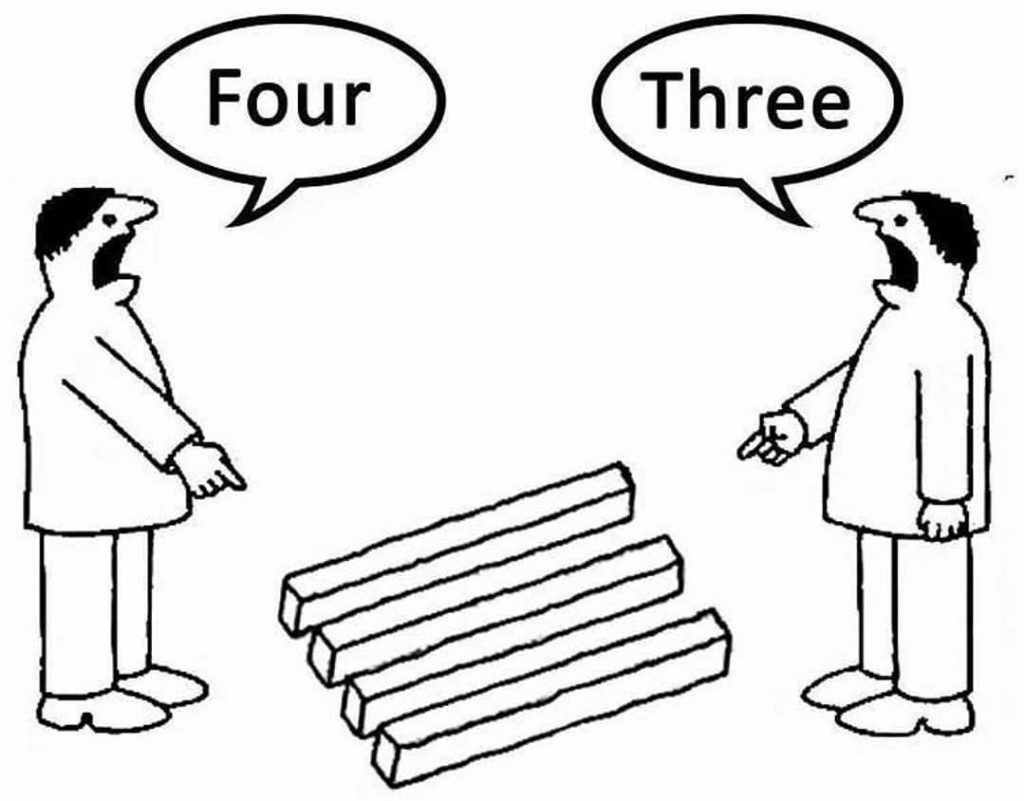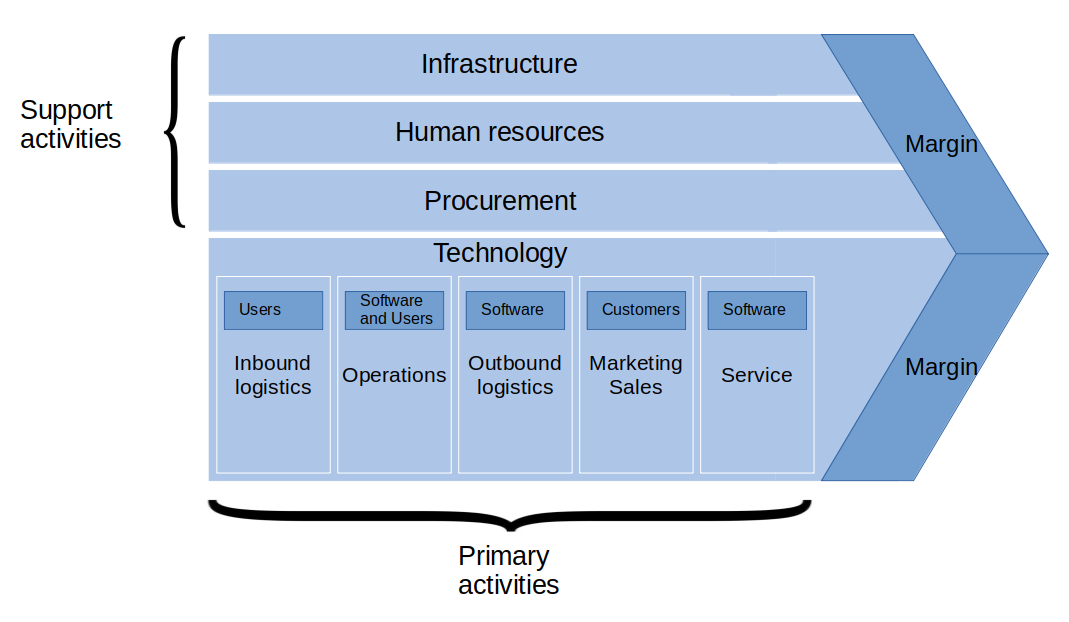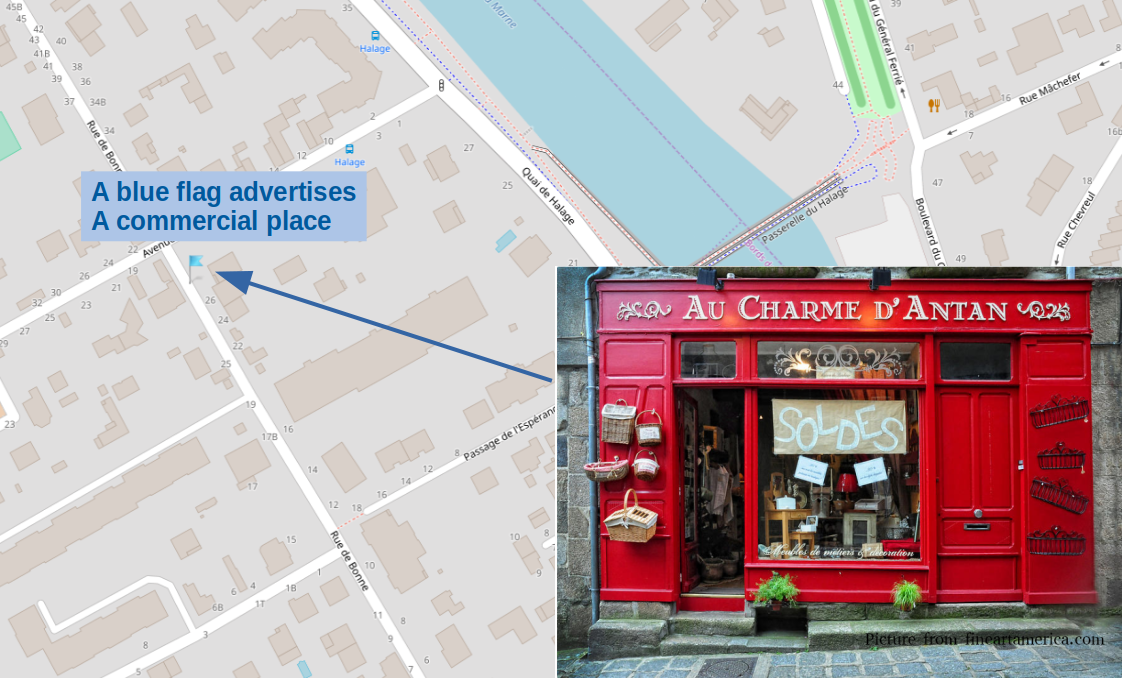
The bases
What is Perception? While our sensory receptors are constantly collecting information from the environment, it is ultimately how we interpret that information that affects how we interact with the world. Perception refers to the way sensory information is organised, interpreted, and consciously experienced. Perception involves both bottom-up and top-down processing. Bottom-up processing refers to the fact that perceptions are built from sensory input. On the other hand, how we interpret those sensations is influenced by our available knowledge, our experiences, and our thoughts. This is called top-down processing. [Lumen, 2018]

The problem
I (my parents, my friends, my colleagues, …) will live (work, play, study…) in a place, is the place safe ? How can I assess the place ? Can I perform a research on news, stories, histories about the place ?
The idea
Provide geo-located news, stories,histories, based on a point with geographic coordinates rather than an unspecified area, then visualise an area that includes those points for getting all narrative information in order to form a clear perception of the area’s security situation.

Applications
Personal use, business, emergency /relief activities, any purpose that need information about security for decision making.

Problem statement canvas
A useful tool for framing the problem in order to better understand the complexity is the problem statement canvas from [Ursache, 2018]
| Context When does the problem occur? |
Problem When is the root cause of the problem? |
Alternatives How problem is fixed now? |
| Any time is necessary to move to a new location, temporarily or permanently. | New situation, need time for managing it properly. In the meantime the perception about security in negative. | Hire private researcher for assessing the new location’s security situation. |
| Customers Who has the problem most often? |
Emotional impact How does the customer feel? |
Alternative shortcomings What are the disadvantages? |
| People actively working and/or studying. Organisations moving to new locations. |
Anguish, fear, worries. | Difficult to share the assessment with neighbourhood because of possible confidential content. Research is often expensive. |
| Quantifiable impact What is the measurable impact? |
||
| Less productive in working environment and less focused on social relations. |

The buyer persona
Identifying a buyer persona enables the organizations to organize a marketing strategy in order to reach the most receptive and likely to become customers or supporters. [Heinze et al, 2017]
The table below summarize the buyer persona.
| Who | Working age population as defined by [OECD, 2018] (people aged 15 to 64) |
| What | Primary goal: Assess the security perception related to a specific place. Secondary goal: Feel comfortable in a specific place. |
| Where | Offline: Mostly at home and at workplace. Online: News, chat, social networking websites or apps, entertainment. |
| Content | Entertainment, news, sport, movies. |
| Channels | Facebook, Linkedin, Google +, Whatsapp, Instagram, Twitter, Foursquare, YouTube, Newspaper web sites or apps. |
| Trust touchpoints | Facebook, Linkedin, Google +, Twitter, YouTube, Newspaper web sites or apps. |
| Pain touchpoints | Newsletters, popup ads, Whatsapp. |
| Role | Customer, consumer, influencer. |
| Quotes from buyer persona | I feel safe with no anguish when I am informed. I like to comment news and read other comments. |
| Quotes from the product | Get information from your neighbours. Participate and assess information. |
| Keywords | Security, information, neighbourhood. |
The service
The description follows the format recommended by [UCSC, 2018]
Information system accessible from web site and web app, based on geographical map, updated by users.
Users can get help from other users and from the help desk.
The service is free at no costs.
The service is supported by a dedicated web server powered by Open Layers 3, MySQL, Quill.
Service is delivered through web site and web apps.
The product
The product is software, an application programme with associated services. Its form is composed by a powerful interactive user interface usable in computers, mobile devices such as smartphones or tablets.
Value chain
Porter’s value chain general representation has to be modified because technology is embedded in all primary activities, users are embedded in some of the primary activities in order to create value. [Jhonson et al, 2008]
- Inbound logistics
Users provide inputs to the product by writing, commenting and scoring news - Operations
Software transforms inputs in readable product and interactive components. Users contribute in testing by scoring news - Outbound logistics
Software collect, store and distribute the product to users - Marketing and sales
The main product has to be free at no costs, because users are an essential element of the value chain. An additional product for sale will be introduced when the number of users will reach a substantial percentage of the population calculated in a specific geographical area. It will consist in advertisements of points that refer to physical economic activities, like stores, entertainment places, or any other aggregation points - Service
Software and training provide service.

Strategy
An effective strategy will have to combine a digital presence through Internet, and a physical linkage to points, in particular commercial places in order to create value.

Management
The initiative is essentially a project than has to be managed as a project, Pmbok and Prince2 are the references for management. [Axelos, 2017], [Gerry et al, 2008], [PMI, 2000]
Bibliography
1. Axelos, 2017: Axelos, Managing successful projects with Prince2, 2017, www.tsoshp.co.uk
2. Gerry et al, 2008: Gerry J, Kevan S, Richard W, Exploring corporate strategy, 2008,
3. Heinze et al, 2017: Heinze A, Fletcher G, Rashid T, Cruz A, Digital and social media marketing: a result-driven approach, 2017, http://mastersindigitalmarketing.org/book/
4. Jhonson et al, 2008: Gerry Johnson, Kevan Scholes, Richard Whittington, Exploring corporate strategy, 2008,
5. Lumen, 2018: Lumen, What is Perception?, 2018, https://courses.lumenlearning.com/msstate-waymaker-psychology/chapter/reading-what-is-perception/
6. OECD, 2018: OECD, OECD official web site, 2018, http://www.oecd.org
7. PMI, 2000: Project Management Institute, A Guide to the Project Management Body of Knowledge, 2000, www.pmi.org
8. UCSC, 2018: University of California Santa Cruz, Service Definition Process, 2018, https://its.ucsc.edu/itsm/servicedef.html
9. Ursache, 2018: Marius Ursache, The Problem Statement Canvas for Startups and Innovation Teams, 2018, https://www.detoolbox.com/articles/problem-statement-canvas/

